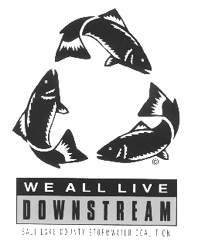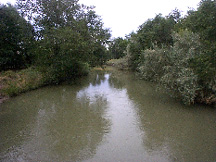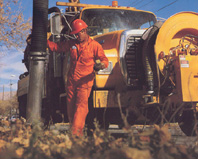Salt Lake City Storm Water Sewer Utility - 1998 Progress Report
Utility formed in 1990 to comply with urban run-off regulations
September 14, 1998
Background:
|
The Act prohibits the discharge of any pollutant from a point source unless a National Pollutant Discharge Elimination System (NPDES) permit authorizes the discharge. Up until 1990, the federal focus on reducing pollution was centered on discharges from industrial process wastewater and municipal sewage treatment facilities. Major federal funding of sewage treatment facilities and industrial pretreatment resulted in significant progress in cleaning up the nation’s waters. However, this was only about one-half the total pollutants flowing into the nation's waterways. Storm water, or urban run-off was long known to be a major source of pollution; but due to the national emphasis on sewage treatment plant construction and the difficulty in developing a cost-effective storm water program, EPA was slow to promulgate the rules for storm water pollution abatement.
As a result of the delays, the National Resource Defense Council and the Citizens For a Better Environment initiated litigation in 1976 and 1979 respectively. In another action by Cathy Williams and others in Oregon, the court issued a consent decree against EPA on October 20, 1989.
Furthermore, as a result of delays in implementing the storm water program, Congress addressed the storm water issue during the reauthorization of the Clean Water Act in 1987. Section 405 of the Water Quality Act of 1987 amended Section 402 of the Clean Water Act to require EPA to promulgate regulations establishing permit application requirements for storm water discharges associated with industrial activity and discharges from municipal separate storm systems serving a population of 100,000 or more, but less than 250,000.
EPA with a consent decree and congress amending the Clean Water Act to address storm water, EPA began promulgating the rules necessary to implement the program.
Salt Lake City was classified among cities having a population of 100,000 or more inhabitants and was required to have a permit by February 4, 1992.
In an effort to meet the new environmental requirements, Salt Lake City decided to form a Storm Water Utility funded from user fees. On July 1, 1990 the City's drainage maintenance and improvements division was transferred to the Department of Public Utilities, and authorized to fund a study to implement a drainage fee and to purchase GIS mapping enhancements to provide parcel sizes and impervious areas for each city plot.
On December 11, 1990, a 20-member citizens committee was formed to study the matter and make recommendations to the Public Utilities Advisory Committee, who in turn made recommendations to the Mayor and City Council.
The Storm Water Sewer Utility was established by ordinance Section 17.75.010 effective July 1, 1991.
Salt Lake City’s Storm Water Program Implementation Activities:
According to Jeff Niermeyer, Public Utilities Deputy Director, the initial program implementation was a major effort. “It was necessary to develop an extensive GIS mapping system to identify all commercial and industrial properties and determine the impervious area in each property parcel, followed by establishing 48,275 billing accounts,” said Niermeyer. He continues, “In a proactive commitment to implement the storm water utility in a fair and equitable manner, over 4,125 accounts were checked and reviewed for accuracy.”
|
|
Over 500 industrial sites have implemented storm water pollution prevention plans. “Prevention at the sources is a key element in our storm water management plan. If successful, we should be able to eliminate the need for future, expensive storm water treatment facilities.” Said Mr. Niermeyer, citing “the cooperative educational program We All Live Downsteam as an example of seeking public support to eliminate pollution at its source.” Public Utilities also participates in the “leaf bag” program. Again, according to Niermeyer, “This is an excellent example of best management practices that significantly enhances runoff water quality.”
Maintenance Activities:
|
Construction Program:
Construction of storm drainage facilities has increased significantly. Over 150 projects at a cost of $15.7 million dollars have been constructed or are under construction. The projects have included large area wide facilities as well as local area projects. As a result of this facility construction, the number of flood damage complaints has been significantly reduced.
Storm Drainage Basin Master Planning:
Developed Master Storm Drainage studies for all of Salt Lake City. The basin master planning provides consistent hydrological, economic and water quality needs of the City's 27 drainage basins areas The master plans provide a long term "blueprint" to direct the storm water sewer utility. The updated basin master planning provided the basis for a citizens committee to establish a prioritized list of capital improvements. A total of 89 major projects have been identified with an estimated cost of $69 million.


